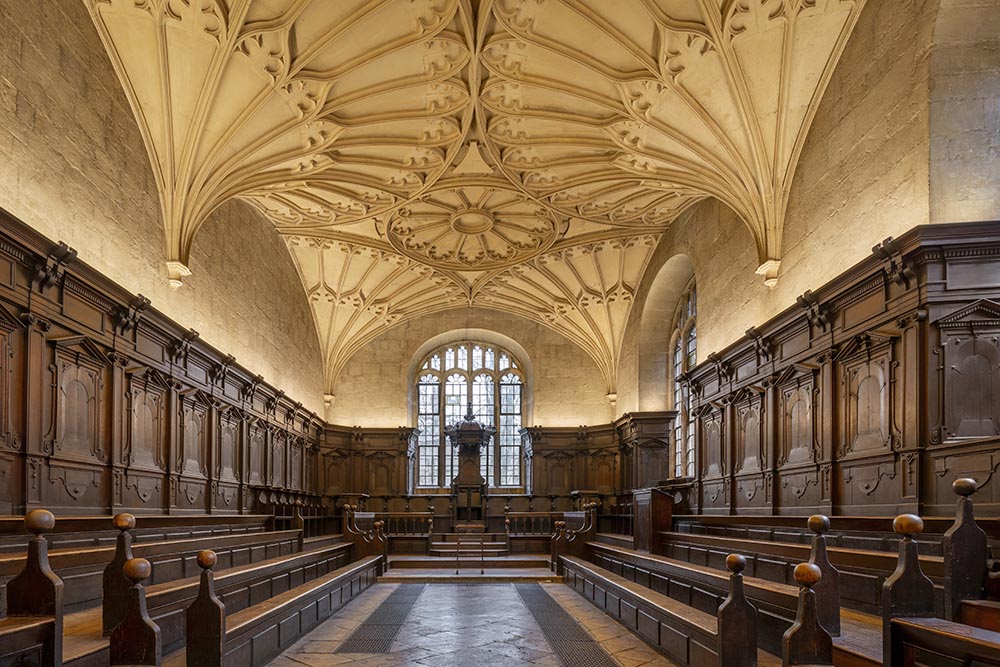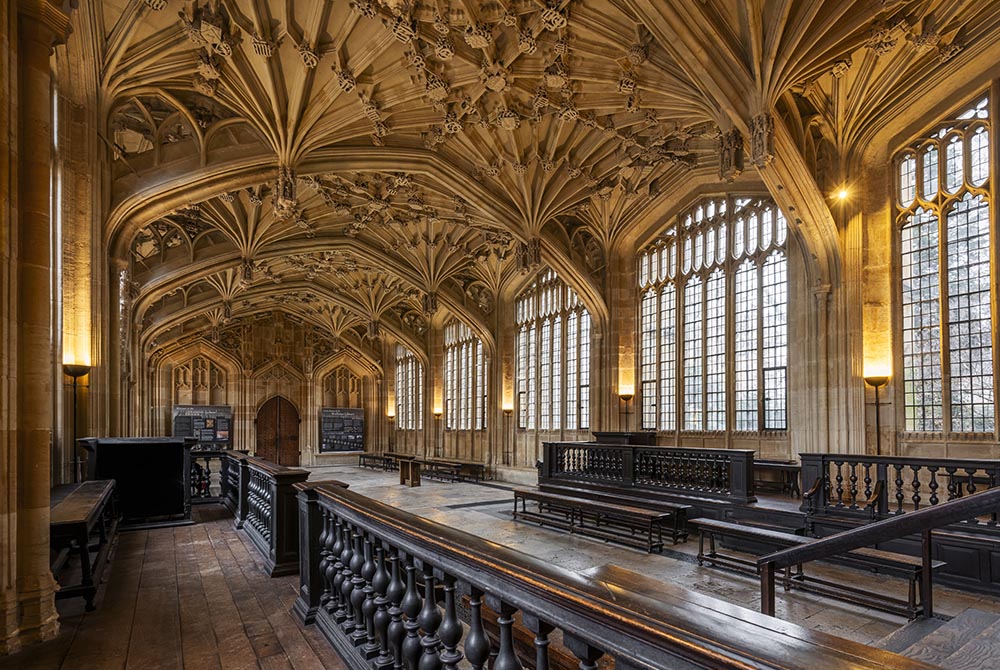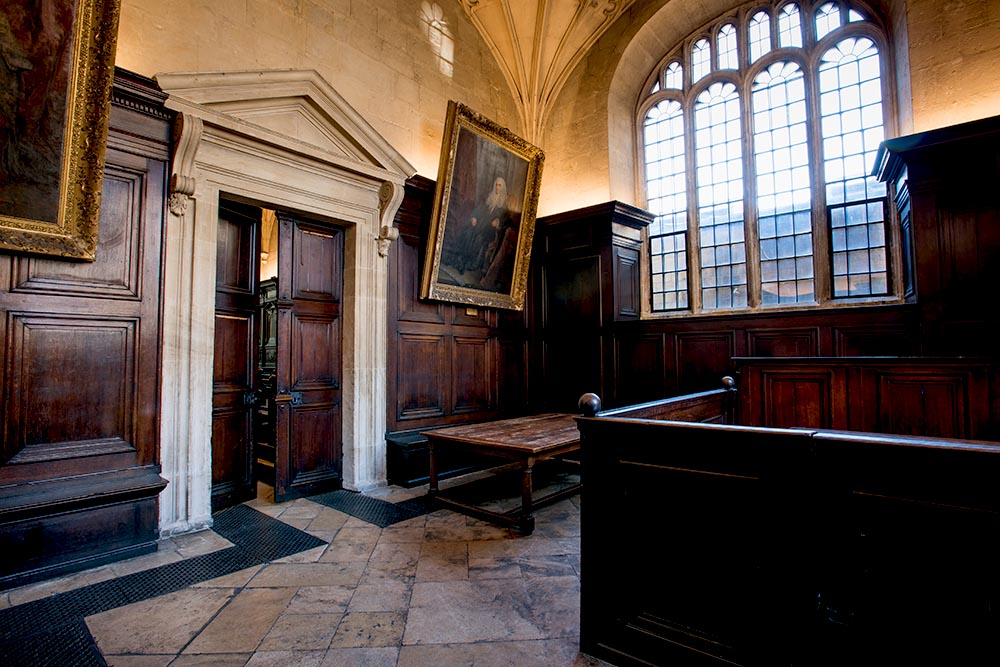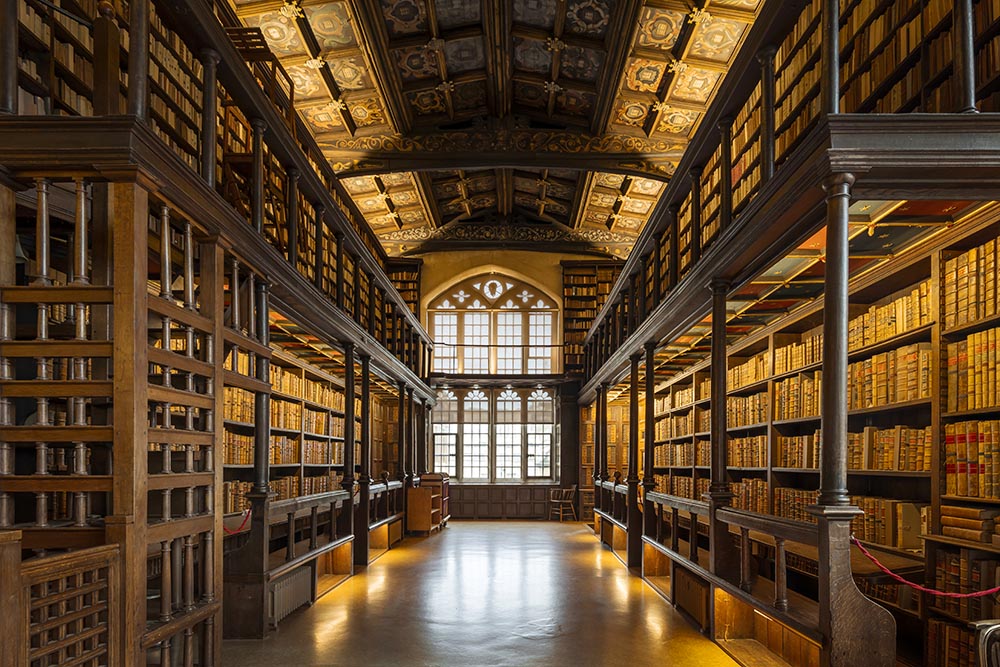Bodleian Library Tours
The conducted tour will last c. 60 minutes.
Delve into the drama of the university and stories of student high jinks.
Starting in the Divinity School and ending in the exquisite Duke Humfrey’s Library, hear how Oxford University maintained order in the 17th-century
and also housed King Charles I’s [ see note below ] parliament whilst the King was resident in Oxford during the English Civil War (1642–1651).
You will see the Divinity School (1427-1488), Convocation House (1634–1637) , Chancellor’s Court (1634-1637), and Duke Humfrey’s Library (1444-1488). Tours will commence in the Proscholium (1610-1612) – the entrance to the Divinity School.
Note: The Divinity School is wheelchair accessible however access to Convocation House requires four steps up and down, and the Duke Humfrey’s library is up 65 stairs. There is no lift available.
The Civil War is an important time for Oxford and the Bodleian.
On 29 October 1642, King Charles himself entered the city with the main Royalist army after the Battle of Edgehill. Charles did not plan on staying in Oxford, but for the remainder of the First Civil War, Oxford was the Royalist capital.
The King chose Christ Church College, the last great pre-Reformation foundation – with close ties to Henry VIII’s new church – as his residence, and Parliament was held from late 1643 in Christ Church Great Hall. Convocation House in the Bodleian served as a meeting place for the House of Lords. Other University buildings were converted for the storage of arms and men, and the larger city was fortified. In 1646 Oxford was formally besieged for two months, and the city surrendered on 25 June 1646.
Convocation House also played a role during the reign of Charles II. In 1665 the Royalist Parliament met there when they relocated from London due to the plague and fire. And in 1681 Convocation House served as the location for the English Parliament, specifically the Oxford Parliament, also known as the Third Exclusion Parliament. This was the last time Parliament met outside of Westminster.
Going back before Charles I, his father James VI of Scotland/James I of England visited Oxford in August 1605 for a four-day stay. In 1620, he donated a copy of his The King’s Booke to the Bodleian Library. The book was formally received and placed in the public collection. A statue of James I, created by John Clark in 1620, is located in the Tower of the Five Orders (of Architecture) in the Bodleian Library’s Old Schools Quadrangle. The king holds two books (rather than the traditional orb and sceptre) to commemorate his donation to the Bodleian




The Chancellor’s Court
(3rd photo down) 1634-37
This will also be included in the tour. This is the historic courtroom where students were once tried for misconduct.